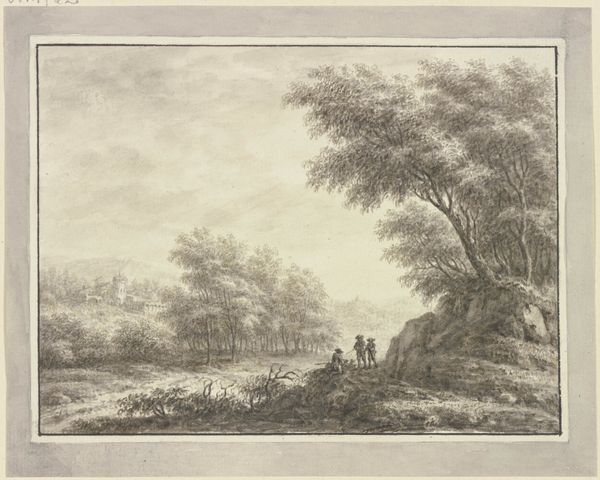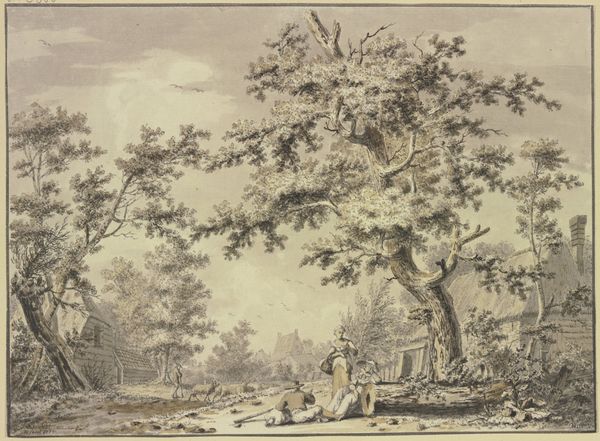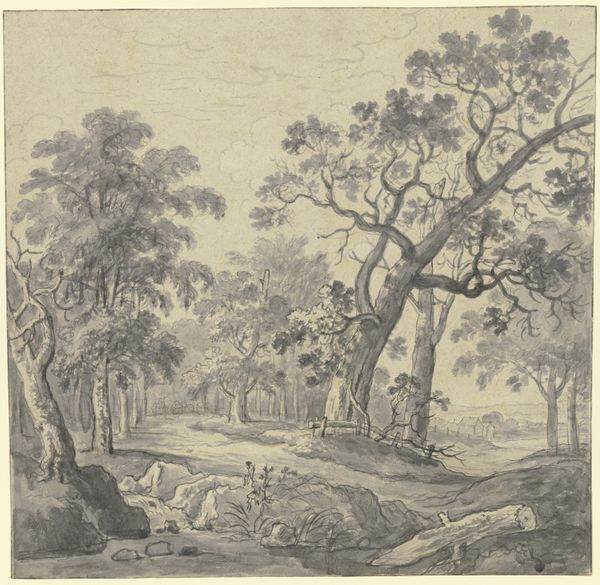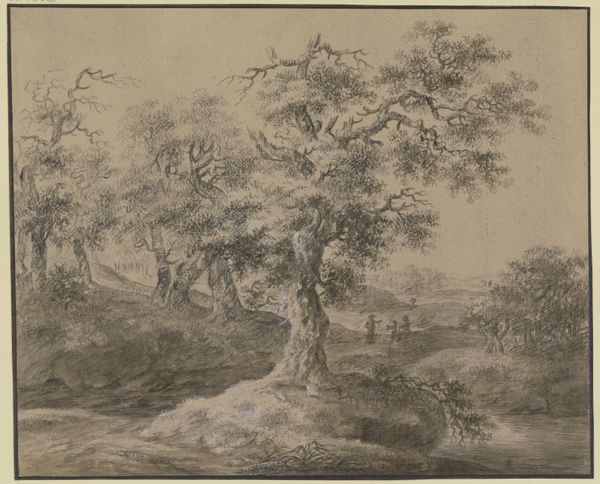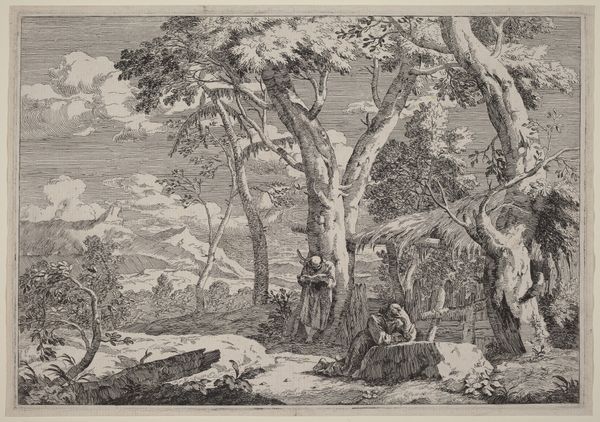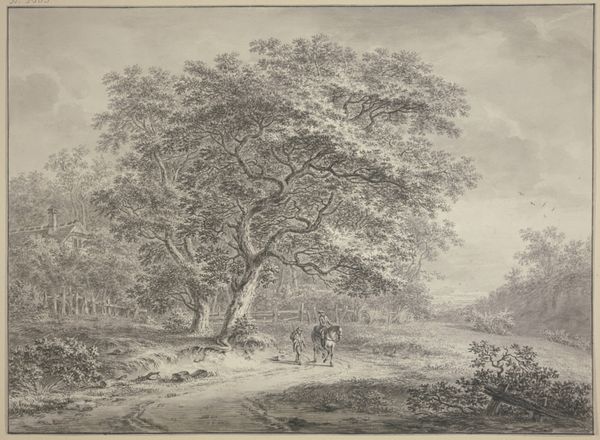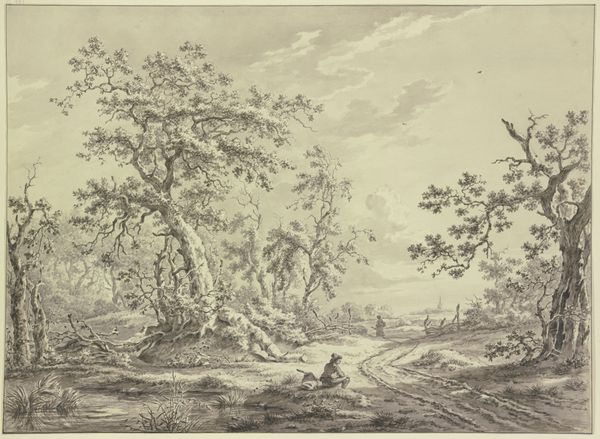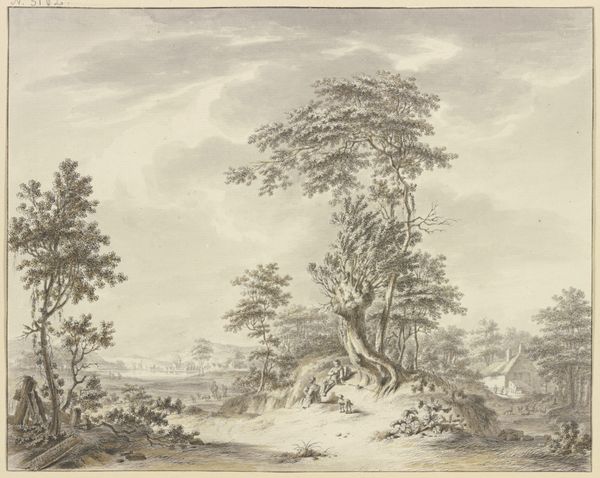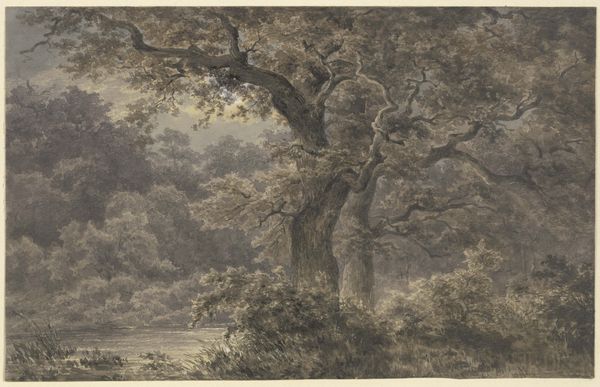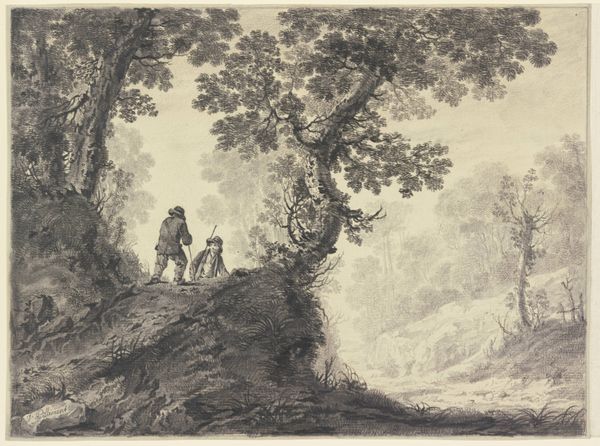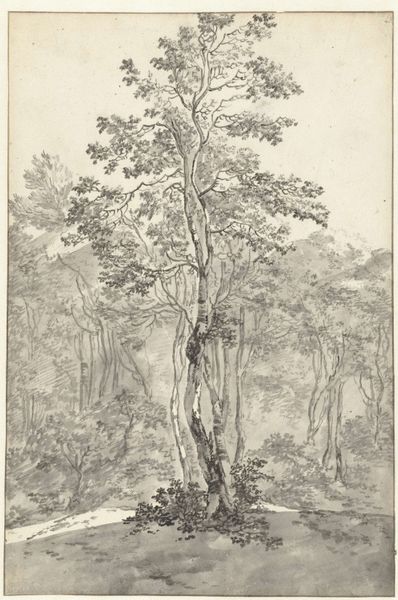
drawing, pencil, graphite
#
drawing
#
landscape
#
pencil
#
15_18th-century
#
graphite
#
rococo
Copyright: Public Domain
Editor: So, here we have "Waldausgang, auf einem Weg eine Frau mit einem Knaben," a drawing by Jean Pillement. It's graphite and pencil on paper, very delicate. I’m struck by how tranquil it feels. What do you see in this piece, considering its historical context? Curator: The image speaks volumes about the changing perception of nature during the 18th century. We move from formal gardens that were status symbols to embracing wild landscapes, seen as emotional and spiritual retreats. This shift mirrored social changes, with more focus on the individual. How do you think this artwork participated in constructing social values around gender and family at that time? Editor: Well, you see a woman and a boy, perhaps a mother and child, walking together... it could romanticize domesticity or maternal bonds, fitting the sentimental ideals of the era. But I'm unsure how conscious this drawing might be as a participant to this system. Curator: Precisely! While seeming like a mere landscape, the depiction invites viewers to project narratives and reinforce norms around family life within idealized natural spaces. The question of artistic intention and social effect always adds complexity. Editor: I see your point. It's a window into the aesthetic preferences and socio-political ideas of the time, consciously or not. Curator: Exactly. Studying art is never about individual intent alone. By seeing what they left, how can art of the past change our appreciation of visual communication of the present? Editor: It changes everything because it contextualizes every choice we have, from who is in the landscape, to what this landscape should look like. Curator: It's always there under our feet, guiding our perception and understanding. Editor: Definitely something to reflect on! Thank you.
Comments
No comments
Be the first to comment and join the conversation on the ultimate creative platform.
